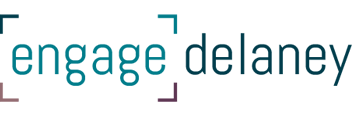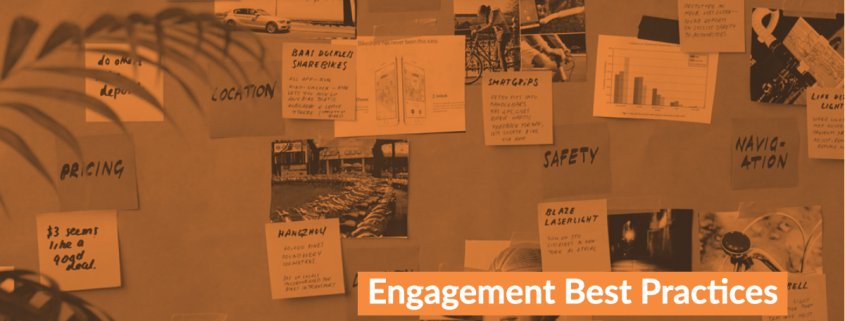Engagement Best Practices – Lessons Learned
by Emina Dervisevic, Director, Engagement + Communications
In 2019, one of my most interesting projects tasked me with research of citizen engagement practices across jurisdictions in Canada and internationally. For this project, I needed to identify and interview engagement leads in Canada and beyond. Needless to say, this was an exciting project where I was able to not only meet but learn from engagement movers and shakers. I have discovered several very interesting engagement trends and best practices that set jurisdictions apart for doing engagement well. Here come some of the key findings:
- Institutionalizing engagement is the answer.
As part of this research project, I spoke to a number of engagement leaders with IAP2 chapters in Canada, USA and Australasia, and engagement leads in different jurisdictions and at different levels of government. In the case of several jurisdictions, the interviewees’ observations were surprisingly similar – they and their team used to do “a lot of engagement,” were recognized as engagement leaders, and then with a change in government leadership and direction, this changed. Suddenly, staff is decimated, number of engagements dropped, and best practices are described as the comeback of the in-person town hall meeting.
Several interviewees have offered a solution to this kind of volatility in engagement linked to shifts in government, and it suggests directly or indirectly – institutionalizing engagement. This involves ongoing funding, dedicated staff and established policies and procedures that require engagement processes to be the same for any and all proposed bylaw or legislative changes. With such structures in place, engagement becomes the reliable constant and is ideally conducted in the same manner for every project requiring engagement.
- The online platform/hub is a must.
Any jurisdiction that is proud to report on their engagement efforts has either recently invested in a user-friendly online platform, is currently developing one or is planning to do so in the near future.
By an online platform, the engagement leads here refer to visually appealing websites with advanced graphic design elements and potentially even innovative interactive functionalities, such as interactive voting, pin maps, etc.
The online platform also absolutely needs to have the capability to be transparent about engagement findings / results, and to post updates about the engagement projects on a regular basis. An ideal online platform would also contain an exhaustive list of engagement projects, from regulatory to non-regulatory engagements, and possibly even “duty to consult” engagements. This would make it a one-stop-shop for any and all engagement projects done by the jurisdiction with all the supporting information.
- Outreach best practices combine online and in-person methods.
When asked about outreach best practices, most engagement leads interviewed echoed each other’s voices without being aware of this. Online technology and tools enable us to reach bigger and wider audiences, and yet, for outreach to be effective, it needs to be combined with small in-person deeper dives as only these will often allow us to hear the truth and its complexities.
- Big and bold engagement advances are only possible if backed by political champions.
Participatory budgeting, citizen juries, or any other innovative and new techniques can be seen as risky, costing unprecedented amounts of money for engagement or walking into unchartered territory. In order for jurisdictions to make bold advances, think of and take on innovative engagement approaches and explore new ways of receiving input from the public, there needs to be a spark, motivation and leadership desire to see engagement make a bigger impact. The political champions need to believe in engagement, understand the benefits of engagement, and be willing to take on the associated risks.
- Big collaboration is the future of engagement.
Engagement is increasingly expected to solve complex issues. For this to happen, an interview, a single focus group, or an open house where most of the time needs to be spent on informing participants can no longer meet this expectation.
For engagement to accomplish what it’s increasingly asked to do, the interviewees have reported on the need for engagement to shift to big collaboration. Jurisdictions known for their consistent leadership in engagement are understanding the value of this new model and are increasingly relying on bigger, thoroughly informed groups, which means we should expect to see more advisory groups, participatory budgeting, citizen juries, etc.
The start of the new decade has us all thinking about the future of engagement and new trends we will be seeing. These learnings will be top of mind for me as I am creating engagement plans this year. Do any of these resonate with you?




